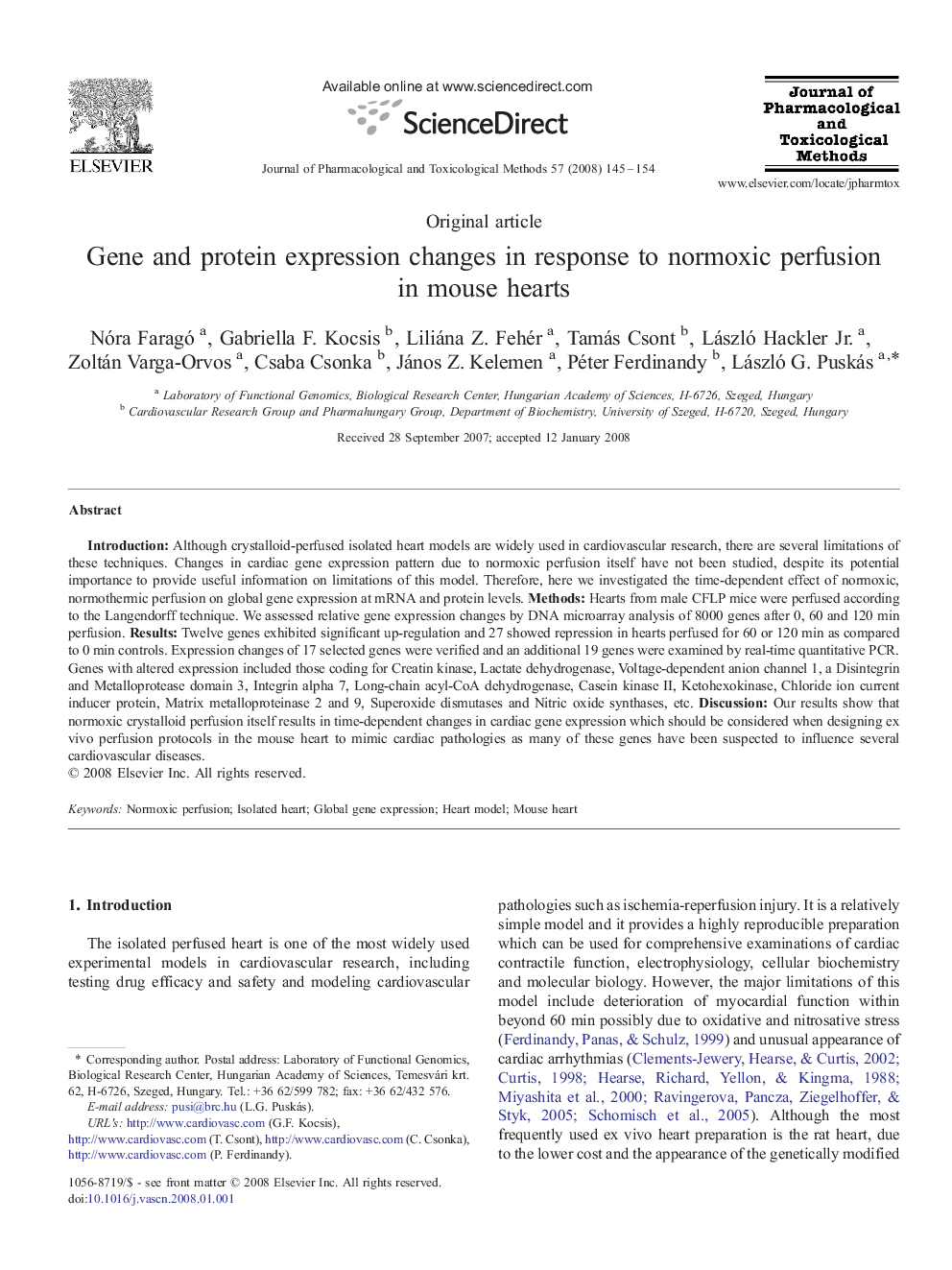| Article ID | Journal | Published Year | Pages | File Type |
|---|---|---|---|---|
| 2549922 | Journal of Pharmacological and Toxicological Methods | 2008 | 10 Pages |
Introduction: Although crystalloid-perfused isolated heart models are widely used in cardiovascular research, there are several limitations of these techniques. Changes in cardiac gene expression pattern due to normoxic perfusion itself have not been studied, despite its potential importance to provide useful information on limitations of this model. Therefore, here we investigated the time-dependent effect of normoxic, normothermic perfusion on global gene expression at mRNA and protein levels. Methods: Hearts from male CFLP mice were perfused according to the Langendorff technique. We assessed relative gene expression changes by DNA microarray analysis of 8000 genes after 0, 60 and 120 min perfusion. Results: Twelve genes exhibited significant up-regulation and 27 showed repression in hearts perfused for 60 or 120 min as compared to 0 min controls. Expression changes of 17 selected genes were verified and an additional 19 genes were examined by real-time quantitative PCR. Genes with altered expression included those coding for Creatin kinase, Lactate dehydrogenase, Voltage-dependent anion channel 1, a Disintegrin and Metalloprotease domain 3, Integrin alpha 7, Long-chain acyl-CoA dehydrogenase, Casein kinase II, Ketohexokinase, Chloride ion current inducer protein, Matrix metalloproteinase 2 and 9, Superoxide dismutases and Nitric oxide synthases, etc. Discussion: Our results show that normoxic crystalloid perfusion itself results in time-dependent changes in cardiac gene expression which should be considered when designing ex vivo perfusion protocols in the mouse heart to mimic cardiac pathologies as many of these genes have been suspected to influence several cardiovascular diseases.
